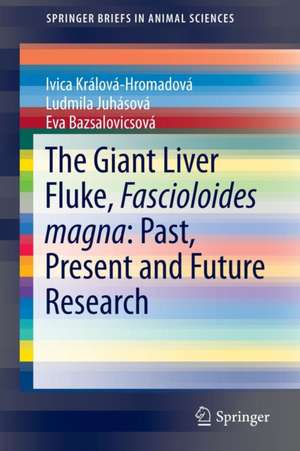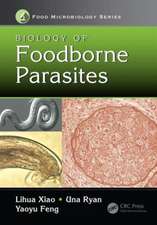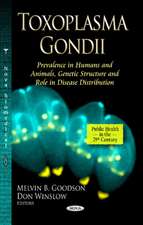The Giant Liver Fluke, Fascioloides magna: Past, Present and Future Research: SpringerBriefs in Animal Sciences
Autor Ivica Králová-Hromadová, Ľudmila Zvijáková, Eva Bazsalovicsováen Limba Engleză Paperback – 2 mar 2016
Din seria SpringerBriefs in Animal Sciences
-
 Preț: 372.35 lei
Preț: 372.35 lei -
 Preț: 380.63 lei
Preț: 380.63 lei -
 Preț: 381.00 lei
Preț: 381.00 lei -
 Preț: 377.18 lei
Preț: 377.18 lei -
 Preț: 382.18 lei
Preț: 382.18 lei - 5%
 Preț: 359.05 lei
Preț: 359.05 lei -
 Preț: 378.54 lei
Preț: 378.54 lei -
 Preț: 446.08 lei
Preț: 446.08 lei
Preț: 377.95 lei
Nou
Puncte Express: 567
Preț estimativ în valută:
72.33€ • 75.05$ • 60.45£
72.33€ • 75.05$ • 60.45£
Carte tipărită la comandă
Livrare economică 15-29 martie
Preluare comenzi: 021 569.72.76
Specificații
ISBN-13: 9783319295060
ISBN-10: 3319295063
Pagini: 106
Ilustrații: XII, 106 p. 16 illus.
Dimensiuni: 155 x 235 x 6 mm
Greutate: 0.18 kg
Ediția:1st ed. 2016
Editura: Springer International Publishing
Colecția Springer
Seria SpringerBriefs in Animal Sciences
Locul publicării:Cham, Switzerland
ISBN-10: 3319295063
Pagini: 106
Ilustrații: XII, 106 p. 16 illus.
Dimensiuni: 155 x 235 x 6 mm
Greutate: 0.18 kg
Ediția:1st ed. 2016
Editura: Springer International Publishing
Colecția Springer
Seria SpringerBriefs in Animal Sciences
Locul publicării:Cham, Switzerland
Cuprins
PREFACE.- GENERAL INFORMATION.- 1.1.Systematics and morphology.- 1.2. Life cycle 1.3. Pathology.- 1.4. Therapy.- DISTRIBUTION OF FASCIOLOIDES MAGNA.- 2.1. North America.- 2.2. Europe.- DEFINITIVE HOSTS.- 3.1. North America.- 3.1.1. Natural and experimental infections.- 3.2. Europe.- 3.2.1. Natural and experimental infections.- INTERMEDIATE HOSTS.- 4.1. North America.- 4.1.1.Natural infections.- 4.1.2. Experimental infections.- 4.2. Europe.- 4.2.1. Natural infections.- 4.2.2. Experimental infections.- MOLECULAR STUDIES AND KARYOLOGY.- 5.1. Standard and molecular cytogenetics.- 5.1.1. Basic karyological characteristics.- 5.1.2. Chromosomal localization of ribosomal genes.- 5.2. Ribosomal genes.- 5.2.1. Structure and application of ribosomal genes.- 5.2.2. Ribosomal DNA in molecular taxonomy of F. Magna.- 5.3. Mitochondrial genes.- 5.3.1. Structure and application of mitochondrial DNA.- 5.3.2. Mitochondrial DNA in F. magna biogeography.- 5.4. Microsatellites.- 5.4.1. Structure and application of microsatellites.- 5.4.2. Microsatellites in studies of genetic interrelationships of F. Magna.- CONCLUSION.
Notă biografică
Ivica Králová-Hromadová, Ľudmila Zvijáková, Eva Bazsalovicsová
Slovak Academy of Sciences, Kosice, Slovakia
Caracteristici
Summarizes the main aspects of current knowledge about the giant liver fluke Gives insight to the latest research on molecular biology and karyology of the parasite Explains the geographic distribution of the giant liver fluke in detail Includes supplementary material: sn.pub/extras





